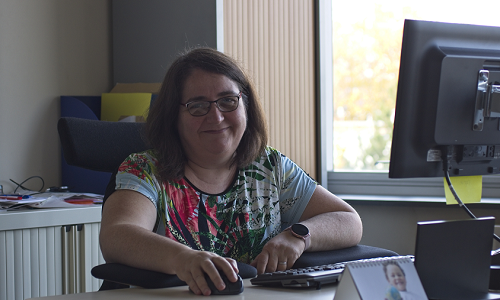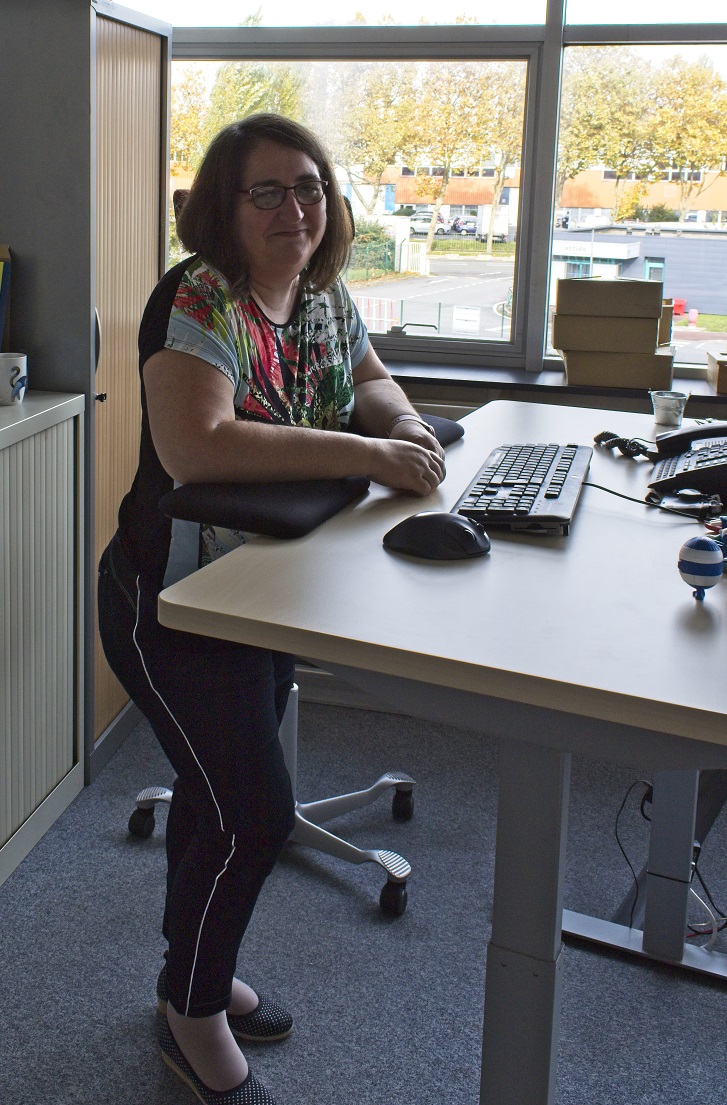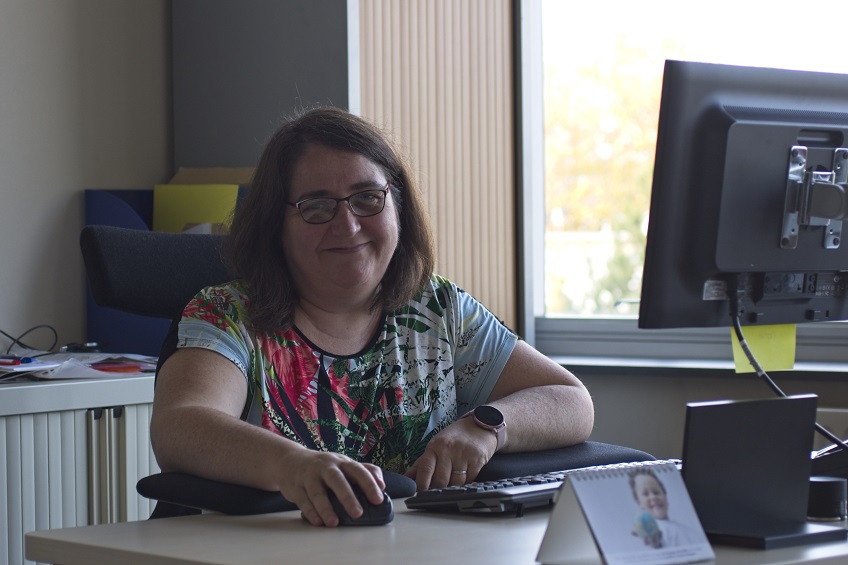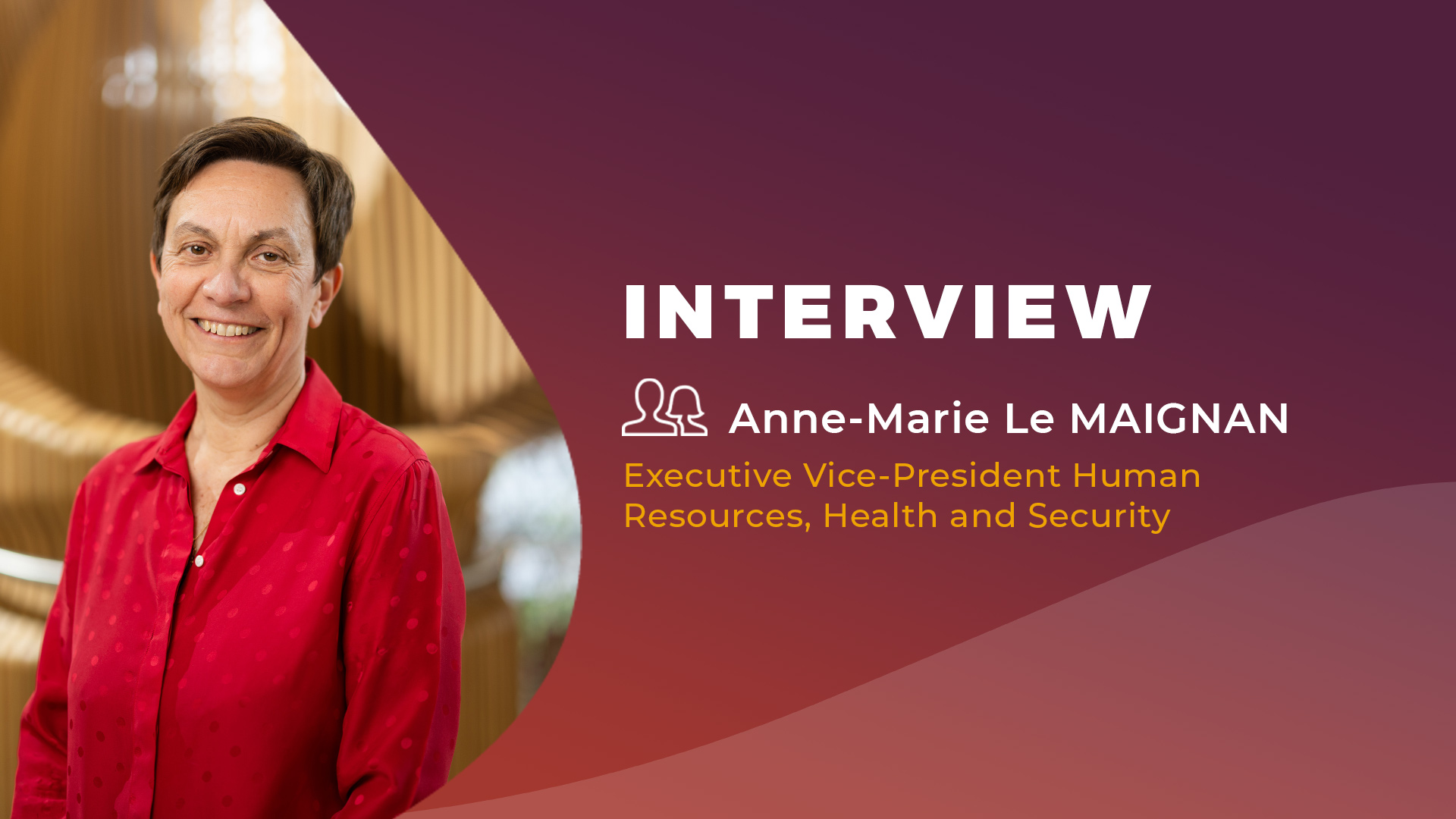80% of disabilities are invisible. However, going unnoticed is far from being an advantage. Véronique Parisot, who has experienced first hand the difference having your disability recognized can make, tells us about it.
Neither on her feet nor seated: this is Véronique Parisot’s everyday reality. She adjusts her desk and seat according to the time of day and her level of pain. She is disabled, but it doesn’t show. And this sort of invisible handicap is sometimes a bit of a problem: “You have a great desk and a great chair! How did you pull that off? Do you have connections?” someone said to her at her previous job. Her reply was blunt and to the point: “I’m not connected, I’m disabled; I’m not “lucky” to have an electric desk, I’m unlucky to have a disability.”
Currently Human Resources Manager at Eramet Ideas, Véronique Parisot’s disability has gradually become more and more pronounced: “I’m not paralyzed, but I’m losing the use of my right leg; I’ll probably need a brace one day. I suffer from chronic back and neck pain. I also receive treatment and that is why now have a reduced workload (i.e, 60%).” To ensure that she gets to work in the best possible conditions, she has a modified workstation: an automated table that can be adjusted in height, as well as an ergonomic chair to ensure that she has the right posture whether she is standing or sitting in a low or high position.
While she now accepts her disability, it has taken a long time for her to come to terms with it and have it recognized.
A long road to having her disability recognized
The accident that broke her spine took place in 1999. After six months off work, Véronique was in chronic pain “but I hadn’t really come to terms with my disability in my head. Psychologically, I was in denial,” Véronique admits. “When you have an invisible disability, you tend to think that you are not disabled, because you are not disabled in the eyes of others. You pretend that you are not disabled.”
She did not initiate the process of obtaining disabled worker status—to which she was entitled—so her employer was unaware of her situation. “It was taxing, both physically and emotionally.” But after fifteen years, she decided to do something about it: “I couldn’t do it anymore,” she says. Véronique was lucky: her company’s HR director at the time encouraged her to have her disability officially recognized. “She told me that I would qualify for specially adapted working arrangements, but in order to do so, I had to come to terms with my disability and my status as a disabled worker,” she recalls.
In 2014, she obtained recognition as a disabled worker from the local Center of Disability Affairs (MDPH). Her employer could then receive support from the AGEFIPH, the French body that works to promote access to employment for the disabled by collecting funds from companies in order to fund solutions designed to keep them in work. An ergonomist worked with her to customize her work environment: work postures, work schedule, commuting, etc.; every detail was scrutinized with a view to choosing the right equipment—her desk, her computer mouse, a seat support for her car, etc.
Véronique then joined Eramet in 2018, originally on a six-month part-time fixed-term contract. Right from the start, she mentioned her disability. Her fear, however, was that the company would refuse to invest in specialized equipment for a short contract. To her astonishment, three weeks after her arrival, her working arrangements were adapted. Since then, she has been hired on a permanent basis. Today, she is the one who promotes this inclusive culture at Eramet Ideas.
What are your needs?
“There is no such thing as ‘one’ disability; there are many different types of disability: cancer, mental illness, diabetes, mobility problems, etc. Each disability brings with it its own particular needs,” says Véronique. “When you are attempting to integrate an employee with a disability, there is only one question you need to ask: ‘What are your needs?’“
Solutions can be found—she is the proof of that—, but everyone has to accept their disability. Starting with disabled people themselves: “I still encounter a lot of people who are afraid to admit that they have a disability—for fear of how others will view them, of the cost, of the problems it might cause. Having a recognized disability can even be an advantage when it comes to hiring. Most companies have difficulty recruiting disabled employees and do not meet the mandatory 6% quota.” The same fears are present in corporate culture: “When it comes to recruitment, if I suggest to managers today that they hire a disabled person to join their team, their first inclination is to assume that doing so might be complicated and to wonder if they can make it work.“
So Véronique actively promotes inclusion in the company, as well as in everyday life. “We need to make sure people get to experience more diversity—right from the beginning of their lives—so that things will change in the workplace too,” she says. This week, the European Disability Employment Week is taking place (November 15 to 21): “This event is of vital importance: it’s an opportunity to talk about disability without feeling uncomfortable.“
During this special week, the Eramet Group will also participates in DuoDay, a French initiative in which employees across France volunteer to host a person with a disability and introduce them to their job and their workplace environment.





